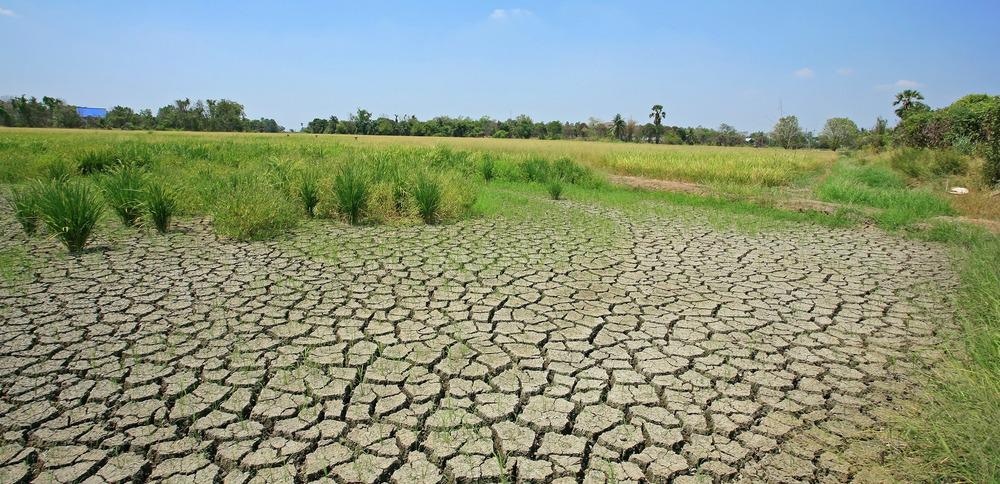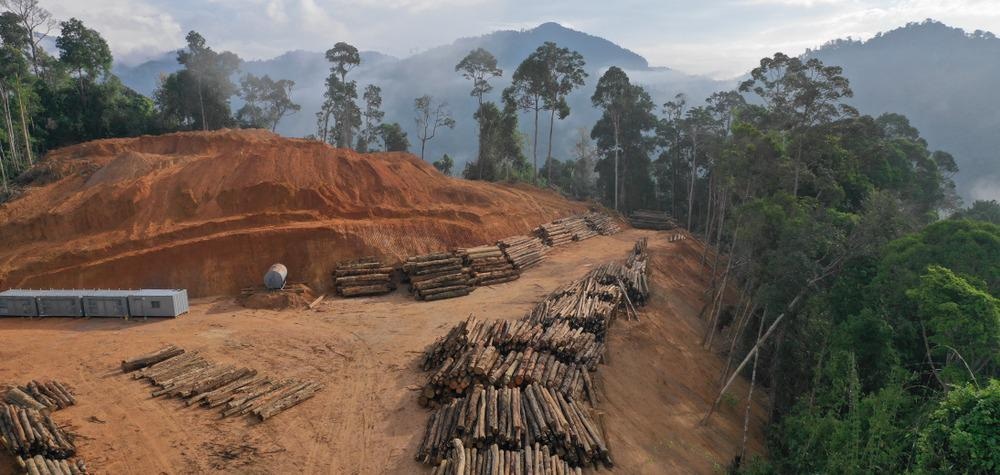The United Nations (UN) World Desertification and Drought Day, 17 June, highlights the global problem of desertification and drought – and celebrates endeavors to tackle it. The latest developments in the fight against desertification and drought are the result of creative problem-solving, community-focused interventions, and international cooperation.

Land degradation and drought are becoming increasingly common due to human land-use change. Image Credit: Blanscape/Shutterstock.com
Desertification and Drought: A Global Problem
Restoring land that has been degraded should be a top priority for stakeholders worldwide. Land degradation leads to desertification, which leads to drought. Fighting this results in less food insecurity, more nourishment, and better population health in the poorest countries in the world.
Land restoration projects help local communities by bolstering the local economy. Green jobs in long-term restoration projects help to catalyze economic development in some of our least-developed economies. These projects also bring long-term economic resilience to the regions they are in, creating or restoring sustainable industries for the local population.
Restoring the damage caused by land-use change (usually deforestation for agriculture) helps to prevent the spread of infectious diseases. Land-use change is the main transmission pathway for novel infections in human populations, with zoonotic diseases emerging in humans after animals are forced from their natural habitats.

Deforestation is one of the main reasons for desertification and drought across the world. Image Credit: Rich Carey/Shutterstock.com
As well as delivering numerous benefits for human society, economy, and health, combating desertification and drought is also an urgent necessity for the health of the entire planet.
Almost 75% of the land on Earth that does not have ice on it has been changed by humans for growing food, extracting materials, and constructing buildings and infrastructure. These changes are now negatively impacting at least 3.2 billion people’s well-being, 40% of the entire planet’s population.
Combating Desertification and Drought
Desertification, which can lead to drought, is land degradation in an arid, semi-arid, or dry sub-humid area. Although desert expansion is a part of desertification, most areas that are being degraded in this way are effectively becoming new deserts.
Desertification is caused by human activity and occurs when dryland ecosystems are overexploited. Deforestation, overgrazing, and poor irrigation practices contribute to degrading land in hot areas, and there are also correlations between desertification and poverty and political instability.
To combat these problems, projects need to be of a sufficient scale to tackle social, economic, and environmental factors in desertification and drought. They need to focus on solutions that will be economically as well as environmentally sustainable for local communities, as well as drawing from the best creative problem-solving and international cooperation that the global human community can produce.
Reforestation and Afforestation Projects

Image Credit: Fotomundo/Shutterstock.com
The biggest projects combating desertification and drought – in terms of budget, time, partners, and impact – are large-scale tree-planting missions. Reforestation (trees planted to restore deforested areas) and afforestation (trees planted to create newly forested areas) projects represent the main focus of land restoration globally.
Great Green Wall of China
Officially referred to as the Three-North Shelter Forest Program, China’s Great Green Wall project is one of the first major land restoration projects undertaken around the world. It is also an incredibly long-term project, having started in 1978 and not being due for completion until 2050.
The project is planting a series of forest strips designed for wind breaking (known as shelterbelts). As well as halting the expansion of the Gobi Desert, the project aims to provide timber for the use of the local population.
According to reports, the project has already planted 66 billion trees in the area. Desert land in China has decreased by almost 2000 sq km per year, and the frequency of sandstorms nationwide has fallen by 20%.
Criticisms of the project center on its use of monocultural forests. These are cheaper to plant and grow faster than wild woodlands. However, studies have shown that wild woodlands store carbon dioxide better than monocultural plantations, leading to better tree and soil health.
Reforestation and China's Great Green Wall
Video Credit: Reuters/YouTube.com
The Great Green Wall of Africa
A similar afforestation project was launched by the African Union in 2007. The Great Green Wall of Africa is an African-led initiative seeking to restore the continent’s degraded land, while transforming lives in one of the poorest regions in the world, the Sahel (the area between the Sahara Desert to the north and the Sudanian savanna to the south).
When finished, the Wall will become a new natural wonder of the world. The 8000-km forest would be the largest living structure on the planet, stretching across the entire width of the continent of Africa.
The project is underway in 20 countries and has received over $8 bn in funding and pledges. By 2030, the project aims to restore 100 million hectares of degraded land. It will also create 10 million jobs and sequester 250 million tons of carbon.
How Africa is Turning the Sahara Desert Green
Video Credit: Risen Africa/YouTube.com
Saudi and Middle East Green Initiatives
In 2021, the Crown Prince of Saudi Arabia announced afforestation plans for the middle east region. Two initiatives – one focused inside the Kingdom of Saudi Arabia, and another extending to the wider middle east region – follow the Great Green Wall projects in focusing on community development alongside environmental restoration.
Soil Restoration
While forestation projects typically receive the most attention and funding – with smaller initiatives in Europe, South Asia, and the Americas also underway – restoring the soil itself can also be effective in the fight against desertification.
The actual restoration of the soil is achieved by plants in the natural soil cycle, but projects that encourage or allow plants to grow can speed up or even instigate this process with human intervention.
Soil restoration includes the use of nitrogen-rich fertilizer; farming methods including fallowing and rewilding; saving and better distributing water; and even bioengineering soil microbes.
Soil health is a very recent field of study, and still not much is known about soil ecosystems and their impact on the wider environment. However, what is becoming increasingly well-known is the importance of soil to wider environmental problems, including desertification and drought.
References and Further Reading
Bastin, Jean-Francois, Yelena Finegold, Claude Garcia, Danilo Mollicone, Marcelo Rezende, Devin Routh, Constantin M. Zohner, and Thomas W. Crowther (2019). “The Global Tree Restoration Potential.” Science. [Online] https://doi.org/10.1126/science.aax0848.
IPCC (2019). “IPCC Special Report on Climate Change, Desertification, Land Degradation, Sustainable Land Management, Food Security, and Greenhouse gas fluxes in Terrestrial Ecosystems.” IPCC. [Online] https://www.ipcc.ch/site/assets/uploads/2019/08/4.-SPM_Approved_Microsite_FINAL.pdf.
Hosonuma, Noriko, Martin Herold, Veronique De Sy, Ruth S De Fries, Maria Brockhaus, Louis Verchot, Arild Angelsen, and Erika Romij (2012). “An Assessment of Deforestation and Forest Degradation Drivers in Developing Countries.” Environmental Research Letters. [Online] https://doi.org/10.1088/1748-9326/7/4/044009
Negin, Elliott (2012). “Would a Large-scale Reforestation Effort Help Counter the Global Warming Impacts of Deforestation?” Union of Concerned Scientists. [Online] https://blog.ucsusa.org/elliott-negin/would-reforestation-help-counter-deforestation.
UN (2021). World Day to Combat Desertification and Drought. [Online] https://www.un.org/en/observances/desertification-day.
Disclaimer: The views expressed here are those of the author expressed in their private capacity and do not necessarily represent the views of AZoM.com Limited T/A AZoNetwork the owner and operator of this website. This disclaimer forms part of the Terms and conditions of use of this website.